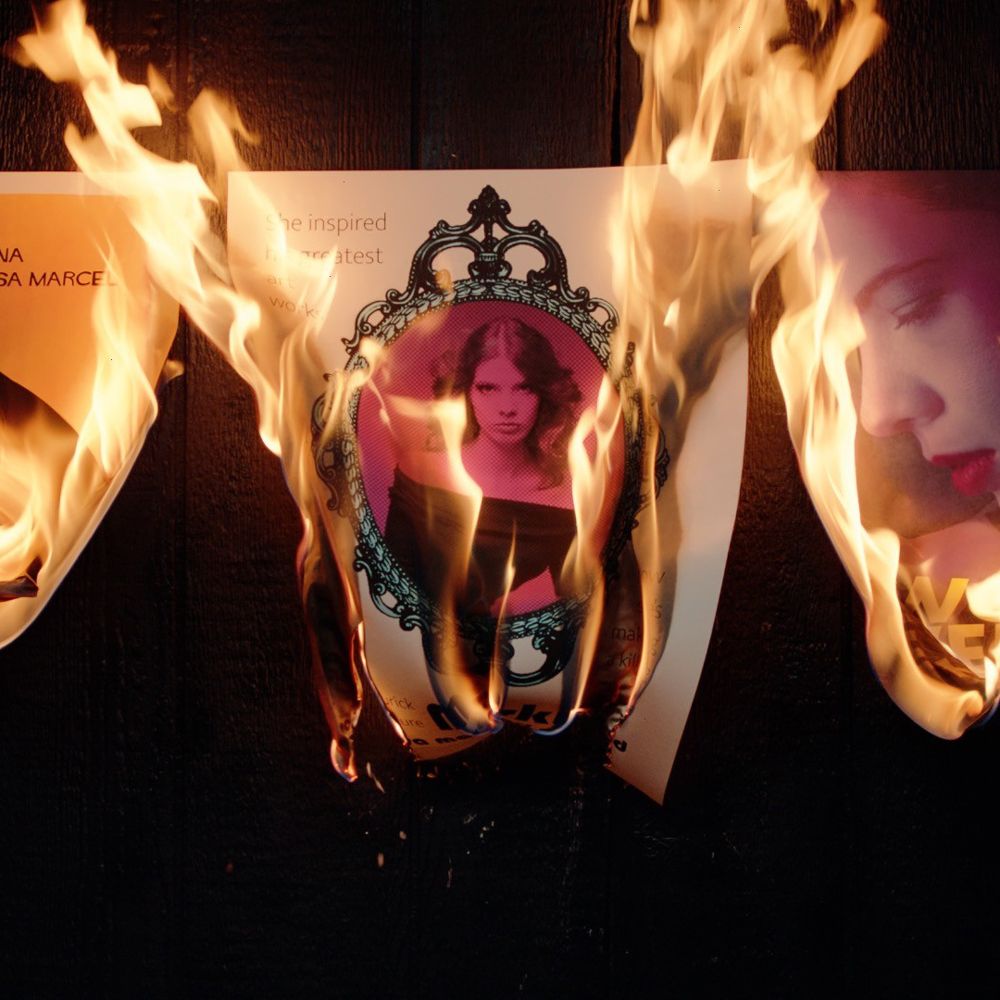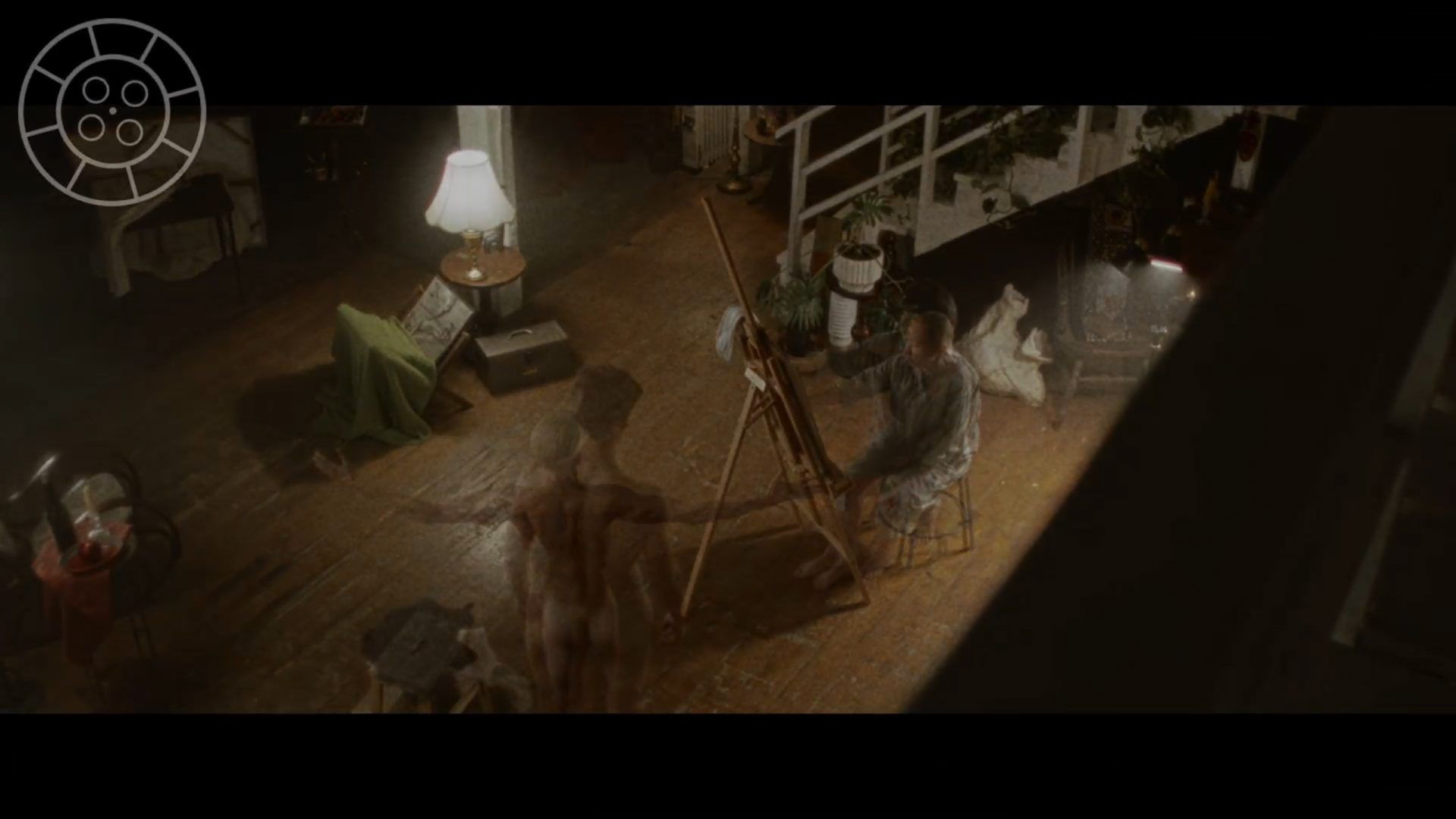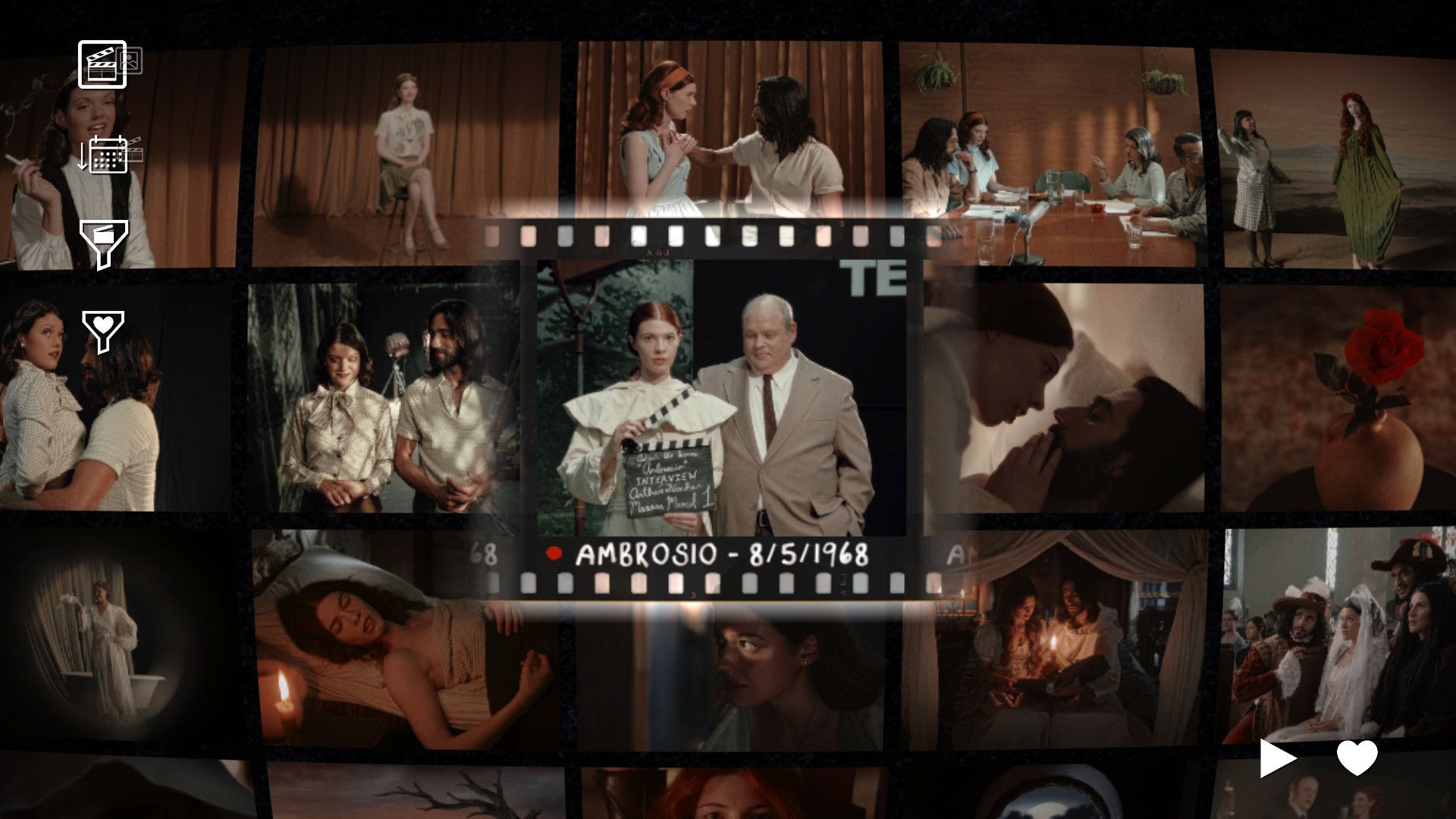MINOR SPOILER WARNING: This feature discusses some specific clips and certain key mechanics from the game.
Immortality, the latest game from FMV-obsessed developer Sam Barlow and his team at Half Mermaid, has me hopelessly compelled. As a film buff and 'Master of Film Studies' (something I get to brag about all too rarely), I was drawn in by the fact that the game revolves around finding footage from three artsy European-style films that were shot between the 60s and the 90s. The acting style, film grain and cinematography accurately mimic movies by the likes of Luis Bunuel, Federico Fellini, and Dario Argento and show a great understanding of arthouse cinema from across the eras. It's a cinephile's wet dream, and if you can't handle sexual imagery and analogies, then be warned that both the game and this feature may make you a tad uncomfortable.
While I haven't yet unravelled the game's central mystery of what happened to Marissa Marcel, the fictional actress who plays the lead role in all three of the featured movies, I've spent enough time with the game to be both captivated and disturbed by one of its key mechanics.
In Immortality, you're watching old video clips via a Moviola machine. Using the analog sticks on your gamepad, you rewind and fast-forward footage from three never-released movies, behind-the-scenes interviews, casual on-set recordings, and talk show interviews with some of the stars . The idea is to seek out characters, animals, even objects in the scene, then select them to be taken to another clip featuring that same person or thing you selected. Through this, you non-linearly piece together the three movies and - crucially - the events that happen between them.
But it's the extra layer of interactivity that freaked the shit out of me out as I played Immortality - bloodshot-eyed and fatigued yet engrossed - into the early hours of Monday morning. See, as you watch certain scenes, you'll hear an ominous whirring sound (which wouldn't be amiss in a David Lynch movie) and your controller will vibrate. When this happens, you can rewind - ideally in slow motion - over to the part where the disturbance occurred, and you'll see an eerie apparition superimposed onto the image, as if another scene, shot from the same angle but ever so slightly different, is trying to force its way over the original footage.
Unaware at first about how to clearly focus on this phantom image, I spent the first few encounters with this rewinding back and forth to try to discern what was going on, and my inability to do so is part of what made it spine-tinglingly creepy. During one scene where a man strips down for a nude painting, he uncomfortably lifts his arms up, but when reviewing the clip backwards, you see someone in the superimposed image lifts their arms all the way into a crucifix-like posture. It went on like this for a while across several clips; I could make out strange figures, intense stares at the camera, even some words that would sometimes get an extra layer of Lynchian weirdness by being played backwards, but could never fully orient myself.
Horror is often at its most effective when you're questioning what it is you're seeing. Hereditary, for example, is a terrifying movie throughout - as reliant on explosions of violence as on a horrid atmosphere that makes your blood run cold - but some of the most effective bits are the figures in the shadows that your attention is never quite drawn, or that naked man leering silently from the darkness of a doorway. Immortality evokes this, while in other ways echoing the original 'videotape horror,' the Japanese classic Ringu, where a malevolent tape seemingly takes on a life of its own as foolish people investigate its footage. There's something about the whirring of old film tape and video that makes it a great format for both a mystery game and a horror; the disruptions in the image, the ability to mess around with image and speech by essentially spinning the tape backwards, and its grainy archival quality give it a special something that you don't quite get with cleaner modern footage.
In one of the more awkward yet effective examples of this, Marissa's character in a movie is getting fucked from behind; there's no tame way to put that and it'd be doing a disservice to the game if we tried to - the movies in Immortality are faithfully old-school European in their sensibilities to sex and here we're watching a couple rutting with the kind of carnal gusto that would make an Italian film director do a chef's kiss of approval at the end of the scene when everyone's done and dusted (and red and flustered). If this scene was already making you a bit wary of someone walking by and getting a no-context glimpse of you watching this couple going at it, then brace yourself, because now you need to rewind and fast-forward over it in slow-motion to try and capture the weird image superimposing itself over the scene.
But the initial awkwardness of obsessively rewinding back and forth over a sex scene quickly makes way for compelling horror, as you see Marissa get replaced by an older woman, staring dead-eyed at the camera and saying things that are clearly off-script from the original scene. It's an unsettling switcheroo at the most vulnerable of moments - a sex scene - and it recalls the infamous 'woman in the bathtub' from The Shining, as poor Jack Nicholson gets lured in by something seemingly appealing only to be shocked by something altogether more horrific. If anything, the subtlety of these ghost images in Immortality, the garbled reverse dialogue, and the fact that you're in control makes it even more effective.
I still haven't figured out exactly what the hell is going in in Immortality, but through an attritional method of analog-stick fiddling I've finally been able to make the phantom footage 'stick,' which fully switches a given scene over into a strange parallel scene that seems critical for plot progression (I suspect the devs deliberately didn't say exactly how to do this so that players could spend a good bit of time fiddling around with the moviola and creeping themselves out).
Some of the creepiness eventually dissipated for me as I grew accustomed to these strange characters existing in the backwards-played clips like those Satanic lyrics ostensibly lingering in Led Zeppelin's Stairway To Heaven. But those early hours poring over these clips and trying to pin down these apparitions (while solving a story that's already unsettling in itself, I might add) are some of the most haunting I've had in recent memory.
Even if the greatest spooks the game had in store are now behind me, I'm compelled to keep burrowing through its archive of alternative-history arthouse film footage, not only to find out what happened to Marissa but to see how the plots of its three bonkers and absurdly horny movies unfold. It's an incredibly atmospheric game, tinged not only with horror and mystery but also the warmth of film footage from an era and style of cinema that - if not exactly lost - certainly doesn't receive the same amount of spotlight as it once did.



